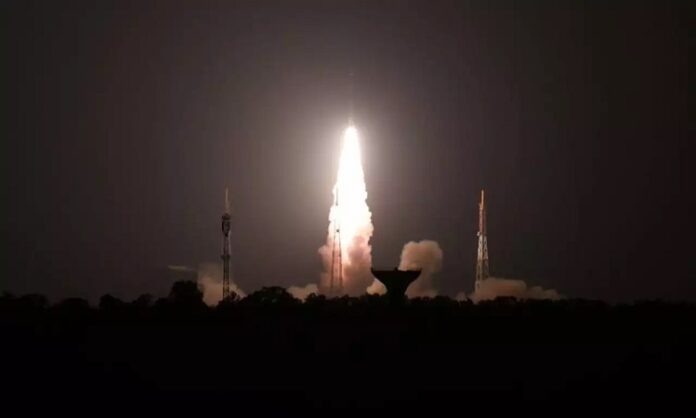Sriharikota (Andhra Pradesh): After successful ejection of the UK-based One Web’s 36 satellites through India’s heaviest rocket, GSLK-MKIII, the Indian Space Research Organisation (ISRO) on Sunday said that it would undertake solar and lunar missions next year.
Talking to mediapersons after putting all satellites at their designated spots in a lower earth orbit (LEO), ISRO chairman S Somanath said they were preparing to send space crafts to Sun (Aditya-L1) and moon (Chandrayan-III), besides carrying on with various other commercial and navigational mission next year.
“ISRO is planning to launch the Chandrayaan-3 mission by the middle of next year–around June. Integration tests are going on in respect of the Chandrayaan-3 spacecraft,” said Somanath.
Though the ISRO chairman refrained from stipulating exact timeframe for launching the Aditya-L1mission, he said that Sankarasubramanian K has been designated as the principal scientist for the solar mission. Sankarasubramaniam K is currently associated with the U R Rao Satellite Centre, Bengaluru, as solar scientist.
Also Read: ISRO to test small satellite launch vehicle, place satellites in LEO
The solar mission by the ISRO is slated to launch a coronagraphy spacecraft that would study the solar atmosphere. The spacecraft will be placed in a halo orbit around the first Lagrange Point, L1, of the Sun-Earth system. A satellite around the L1 point has the major advantage of continuously viewing the sun without occultation/eclipses. This position provides a greater advantage of observing solar activities continuously.
A senior scientist of ISRO said Aditya-L1 has been proposed to take along seven payloads to observe the photosphere, chromosphere and the outermost layers of the Sun (the corona) using electromagnetic and particle detectors.
Also Read: Indian startups to launch space satellites, rockets soon
Four payloads directly view the sun from the unique vantage point of L1, and the remaining three payloads carry out in-situ studies of particles and fields at the L1.
Dr Somanath said ISRO would herald the new year with yet another OneWeb mission that would place another set of 36 satellites in the LEO as done today. He said after winding up the year 2022 with the launch of the second small satellite launch vehicle (SSLV)–the first and maiden flight of SSLV earlier this year was unsuccessful–in December, ISRO will be sending a navigation satellite into the space as part of the NavIC constellation next year.
The ISRO will also plunge Oceansat-3 in to the space to study the oceans. It will also carry a couple of other satellites as piggyback.




